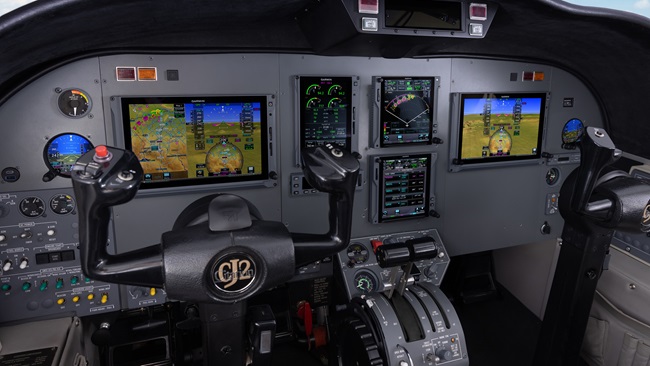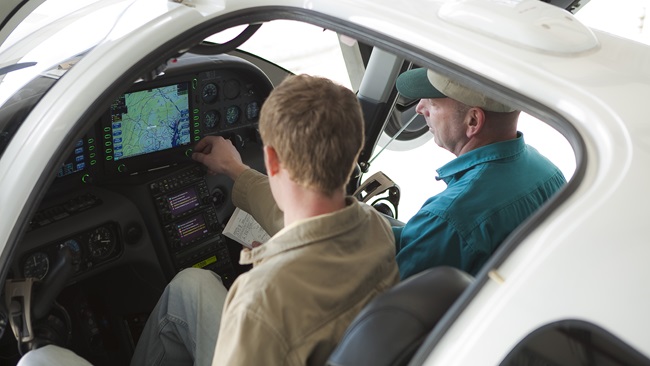ADS-B: Broadcast clarity
Nonelectrical aircraft, NPE, rebate updates

In the regulations requiring the use of altitude-reporting transponders, FAR 91.215(b)(3) and 91.215(b)(5) specify exemptions for “any aircraft which was not originally certificated with an engine-driven electrical system or which has not subsequently been certified with such a system installed, balloon, or glider.” However, FAR 91.225(e)—which provides comparable exemptions to the ADS-B Out requirement—omits the phrase “engine-driven,” which has caused significant confusion among pilots and aircraft owners.
“The legal interpretation confirms that the same aircraft excluded from the transponder requirement are excluded from the ADS-B Out equipage requirement,” said Justin Barkowski, AOPA’s director of regulatory affairs. “That means aircraft subsequently equipped with batteries or an electric starter would not be required to equip for ADS-B Out.
“The concern was that the exception expanded the types of aircraft required to equip with ADS-B Out beyond those required to equip with a transponder,” Barkowski added. “AOPA has received several inquiries about what types of aircraft fall within this exception, and has been tracking this issue with the FAA for some time now. This is a favorable interpretation.”
FAR 91.225(e) allows eligible aircraft not equipped with ADS-B Out to operate within 30 nm of a Class B primary airport—basically, within its Mode C veil—while remaining outside of any Class B or Class C airspace. In addition, eligible aircraft can operate beneath Class B and Class C airspace, although they may not operate above Class B or Class C airspace. Aircraft not certificated with an electrical system, including balloons and gliders, may fly as high as 17,999 feet except above Class B or Class C airspace.
Flight ID guidance
Last month we discussed nonperforming emitters (see “ADS-B: What is an NPE?” March 2017 AOPA Pilot). The FAA willpublish an update to Section 4-5-7 of the Aeronautical Information Manual to clarify proper operating technique.
“If a request for ATC services is predicated on ADS−B and such services are anticipated when either a VFR or IFR flight plan is filed, the aircraft’s FLT ID as entered in Item 7 of the ICAO flight plan (Block 2 of FAA domestic flight plan) must be entered in the ADS−B avionics as described in AIM 4-5-7,” the update reads. In other words, humorous but unauthorized flight IDs won’t fly.
The aircraft’s assigned ICAO address, sometimes called its 24-bit address, is unique and must be broadcast by the ADS-B transmitter. The ICAO address is programmed at installation. How important is this? “Should multiple aircraft broadcast the same ICAO address while transiting the same ADS-B Only Service Volume the ADS-B network may be unable to track the targets correctly. If radar reinforcement is available, tracking will continue. If radar is unavailable, the controller may lose target tracking entirely on one, or both targets,” the AIM update states.
Finally, the AIM will now clarify that after January 1, 2020, aircraft with 978UAT ADS-B avionics capable of broadcasting an anonymous 24-bit ICAO address may do so only when the pilot has not filed a flight plan and is not requesting ATC services. “Operators should be aware that in UAT anonymous mode they will not be eligible to receive ATC separation and flight following services and will likely not benefit from enhanced ADS-B search and rescue capabilities,” the AIM says.
These updates to the AIM will be published in an upcoming change.
ADS-B rebate update
Rules for the FAA’s $500 ADS-B Out rebate for single-engine airplanes exclude ADS-B Out capability obtained from software updates. Upgrades to Garmin’s GTX 330 and GTX 33 Mode S transponders originally were determined not to qualify. However, upgrading those transponders to their ES (extended squitter) versions—which provide ADS-B Out as well as transponder functionality—actually requires a hardware upgrade, in addition to revised software, in order to be 2020 compliant.
The FAA has decided that those transponder upgrades now qualify for the rebate. Owners of GTX 330- or GTX 33-equipped aircraft that also have a Garmin GNS 430W, GNS 530W, or another ADS-B rule compliant position source installed have a very straightforward path to ADS-B equipage—upgrade the transponder, connect it to the position source, and go fly. The FAA notes that these applicants may be asked to provide documentation before their rebates can be approved.
The FAA also updated its rebate FAQs to clarify that the $500 rebate is considered taxable income.
ADS-B hardware news
Aspen Avionics has received a supplemental type certificate allowing its Evolution primary flight and multifunction displays to utilize ADS-B In data from the Garmin GTX 345 ADS-B transponder. With a $795 software upgrade, the Aspen displays can depict dual-band ADS-B In traffic information, as well as subscription-free Flight Information Services-Broadcast (FIS-B) weather information.
Garmin has received an STC allowing installation of its GTX 345 and GTX 335 ADS-B transponders in more than 60 helicopter models. The GTX 345, which provides both Out and In functionality, offers traffic alerting capabilities tailored to helicopter operations. Both transponders are available with optional ADS-B rule compliant GPS receivers.
L3 Aviation Products has added an optional Stormscope WX-500 interface to its Lynx NGT-9000 ADS-B Out and In transponder. The software upgrade allows display of the Stormscope lightning data on the Lynx screen. The lightning capability follows active traffic, terrain warning, and ForeFlight app compatibility introduced in 2016.
Email [email protected]



